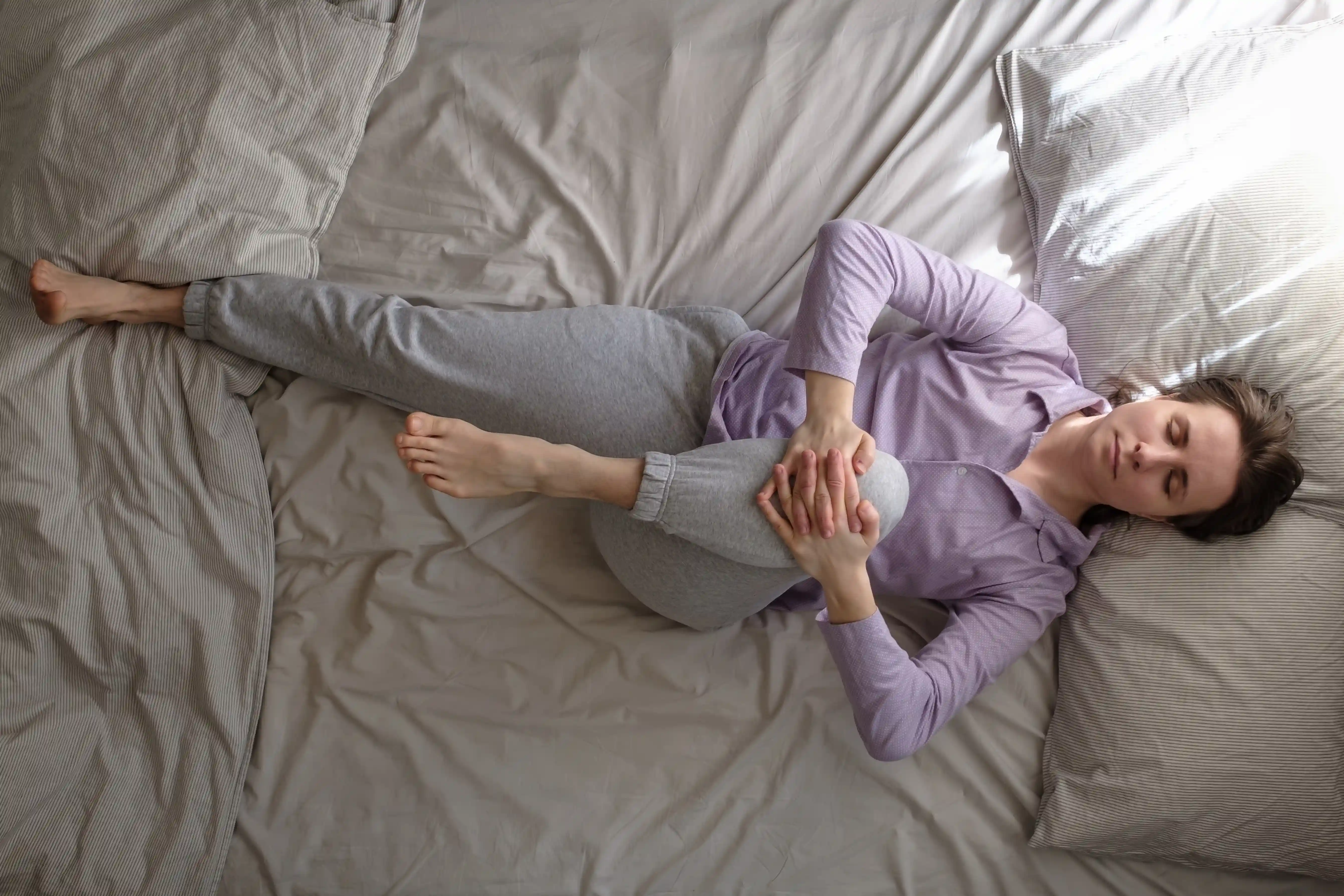Back pain is one of the most common physical health complaints worldwide, affecting people of all ages and lifestyles. While it can range from mild discomfort to debilitating pain, not all back pain is the same.
One specific type, sciatica, occurs when pain radiates along the sciatic nerve, which extends from the lower back down through the hips and legs. This condition often affects only one side of the body and can be caused by various underlying issues such as nerve compression or injury.
Understanding what sciatica is, along with its causes and common triggers, is essential for effective management and long-term relief. This article will break down the key aspects of sciatic nerve pain and how to address them.
What is sciatica?
Sciatica is not a condition in itself but rather a symptom of an underlying issue affecting the sciatic nerve. The sciatic nerve is the largest nerve in the body, and it travels from the lower back, through the buttocks, and down the legs.
When the nerve becomes compressed or irritated, it causes pain, numbness, or tingling that typically affects one leg. The pain can range from mild discomfort to sharp, severe pain that makes movement difficult.
Causes and Common Triggers of Sciatica

Sciatica is often caused by compression or irritation of the sciatic nerve, commonly due to a herniated disc, spinal stenosis, or degenerative disc disease.
Other triggers include poor posture, prolonged sitting, obesity, pregnancy, or injury. These factors can inflame the nerve, causing pain that radiates from the lower back to the leg. We’ll dive deep into each cause below:
Nerve Compression
The most common cause of sciatica is nerve compression, which occurs when something puts pressure on the sciatic nerve. This pressure can result from several different conditions that affect the spine and surrounding tissues.
Herniated Disc
A herniated or slipped disc in the spine can push against the sciatic nerve, causing inflammation and pain. The disc, which acts as a cushion between vertebrae, can bulge or rupture, leading to nerve compression.
Spinal Stenosis
Spinal stenosis is the narrowing of the spinal canal, which puts pressure on the nerves. As the space in the spine becomes smaller, it can compress the sciatic nerve, leading to pain, numbness, and tingling sensations.
Degenerative Disc Disease
As we age, the discs in the spine can begin to wear down. This condition, known as degenerative disc disease, can result in decreased disc height and loss of cushioning, causing pressure on the sciatic nerve.
Piriformis Syndrome
The piriformis muscle, located in the buttocks, can irritate the sciatic nerve if it becomes tight or spasms. This condition, known as piriformis syndrome, can mimic the symptoms of sciatica and is often overlooked.
Injury or Trauma
Injuries to the lower back or spine, such as from a fall or accident, can directly damage the sciatic nerve or lead to swelling and inflammation that compress the nerve and trigger pain.
Poor Posture and Prolonged Sitting
Sitting for long periods, especially with poor posture, can strain the lower back and pelvis, leading to nerve compression. Slumping or slouching places unnecessary pressure on the sciatic nerve, contributing to discomfort.
Obesity and Excess Weight
Excess weight, especially in the abdominal area, can place additional pressure on the spine and nerve roots, increasing the likelihood of nerve compression and sciatica.
Pregnancy
During pregnancy, changes in the body’s posture, weight distribution, and hormonal shifts can put pressure on the sciatic nerve.
This can result in sciatica-like pain, especially in the later stages of pregnancy as the growing uterus adds more pressure to the lower back and pelvis.
Symptoms of Sciatic Nerve Pain

Sciatica can present with various symptoms, which can vary in intensity from mild discomfort to debilitating pain. The most common symptoms associated with sciatic nerve pain include:
Pain in the Lower Back and Buttocks
The pain often starts in the lower back or buttocks and radiates down one leg. It may be a sharp, shooting pain or a dull ache, and it usually affects only one side of the body.
Numbness or Tingling Sensation
Many individuals with sciatica report experiencing a tingling or "pins and needles" sensation along the affected leg. This numbness can extend from the lower back down to the foot.
Muscle Weakness
Sciatica may lead to muscle weakness in the affected leg. This can cause difficulty standing, walking, or lifting the foot. The weakness is due to pressure on the nerve that controls the muscles in the leg.
Pain that Worsens with Movement
The pain from sciatica often becomes more intense with certain movements, like sitting for extended periods, standing up, or bending over. Physical activities that put pressure on the lower back, such as lifting or twisting, can exacerbate symptoms.
Constant Pain or Intermittent Flare-Ups
Some individuals endure continuous pain, while others might encounter sporadic flare-ups. In severe cases, sciatica can make it difficult to sit or stand for extended periods of time.
Pain that Improves with Certain Positions
Certain positions may help relieve sciatic pain. For example, lying on your back with a pillow under your knees or sitting in a reclined position might reduce pressure on the sciatic nerve and alleviate discomfort.
Best Sleeping Positions for Sciatic Nerve Pain
The best sleeping positions for sciatic nerve pain include side sleeping with a pillow between the knees or back sleeping with a pillow under the knees to support spinal alignment.
Avoid stomach sleeping, which can strain the lower back. The fetal position can also help relieve pressure on the sciatic nerve.
Side Sleeping with a Pillow Between the Knees
Sleeping on your side with a pillow between your knees can help align your spine and reduce pressure on the sciatic nerve. This position keeps your hips, pelvis, and spine in a neutral position, which minimizes nerve irritation and reduces pain.
Back Sleeping with a Pillow Under the Knees
If you prefer sleeping on your back, place a pillow under your knees to support the natural curve of your spine. This position helps reduce pressure on the lower back and sciatic nerve, providing relief from pain and discomfort during sleep.
Avoid Stomach Sleeping
Sleeping on your stomach can strain your neck and lower back, worsening sciatic pain. This position puts additional pressure on the spine and can increase discomfort by misaligning the body’s natural curves.
Fetal Position
Curling into a fetal position—lying on your side with your knees drawn toward your chest—can help open up the spaces between vertebrae and relieve pressure on the sciatic nerve. This position can alleviate pain and reduce compression in the lower back.
Effective Nighttime Strategies for Sciatic Nerve Pain Relief

Effective nighttime strategies for sciatic nerve pain relief include gentle stretching, using heat or cold therapy, maintaining a comfortable sleep position, and creating a calming bedtime routine.
Over-the-counter pain relievers, relaxation techniques, and avoiding late-day stimulation can also help. Consistent habits support better sleep and reduce discomfort throughout the night.
Keep Moving Gently During the Day
Gentle movement and stretching throughout the day can prevent stiffness and promote circulation, which helps reduce the severity of sciatic pain at night. Try walking or light exercises to keep your muscles and joints flexible.
Practice Relaxation Techniques
Relaxation techniques, such as deep breathing, progressive muscle relaxation, or meditation, can help reduce stress and muscle tension, making it easier to fall asleep with less pain.
Essential Oils for Relaxation
Certain essential oils, like lavender, chamomile, or eucalyptus, have calming properties that can promote relaxation. Using a diffuser or applying diluted oils to your skin before bed may help soothe pain and improve sleep quality.
Gentle Stretching or Yoga Before Bed
Gentle stretching or a relaxing yoga routine before bed can release muscle tension, improve flexibility, and reduce sciatic nerve pain. Focus on stretches that target the lower back, hips, and legs.
Topical Treatments
Topical creams or gels containing menthol, capsaicin, or arnica may provide temporary pain relief when massaged into the affected areas before bedtime.
Creating a Comfortable Sleep Environment
A supportive mattress and pillow that align your spine can reduce pressure on the sciatic nerve during sleep. Keep the room dark, quiet, and cool to promote better rest.
Elevate Your Legs Slightly While Sleeping
Elevating your legs slightly with a pillow can help relieve pressure on the lower back and sciatic nerve, providing more comfort throughout the night.
Using Heat and Cold Therapy for Pain Relief
- Heat Therapy: Applying a heating pad or warm towel for 15-20 minutes before bed can help relax tight muscles, increase blood flow, and ease pain.
- Cold Therapy: Use ice packs or cold compresses for 10-15 minutes to reduce inflammation and numb pain.
- Alternating Heat and Cold: Switching between heat and cold therapies can maximize relief by both reducing swelling and soothing tense muscles.
Over-the-Counter Medications for Nighttime Relief
- NSAIDs (Ibuprofen, Naproxen): These can help reduce inflammation and alleviate pain, making it easier to rest.
- Acetaminophen: An alternative for pain relief if NSAIDs are not suitable for you.
- Consult a Doctor for Severe Pain: For persistent or severe pain, it’s important to consult a healthcare provider for stronger medications or further treatment options.
Supportive Sleep Products for Sciatica
Choosing the Right Mattress
A mattress that provides both support and comfort is essential for sciatic pain relief. Look for medium-firm mattresses that help align the spine and relieve pressure on the lower back and hips. Memory foam or hybrid mattresses can offer good contouring to minimize discomfort during sleep.
Pillow Support for Alignment
Proper pillow support is crucial to keep the spine aligned. For side sleepers, use a firm pillow between the knees to maintain hip alignment. For back sleepers, a pillow under the knees can reduce strain on the lower back and sciatic nerve.
Adjustable Beds
Adjustable beds can provide personalized support by allowing you to raise or lower different sections of the bed. Elevating the head or legs can help alleviate pressure on the lower back and sciatic nerve, making it easier to find a comfortable sleeping position.
Lifestyle Tips for Long-Term Sciatica Management
To manage sciatica long-term, maintain a healthy weight to reduce spinal pressure, strengthen core and back muscles for better support, and avoid prolonged sitting or poor posture.
Incorporating regular movement, stretching, and good ergonomics can help minimize pain and prevent further flare-ups of sciatic nerve discomfort.
Maintain a Healthy Weight
Excess weight puts additional stress on the spine and sciatic nerve, exacerbating pain. Maintaining a healthy weight through a balanced diet and regular exercise can help reduce the pressure on the lower back, improving long-term sciatica management.
Strengthen Core and Back Muscles
A strong core and back help support the spine and reduce strain on the sciatic nerve. Incorporate strengthening exercises into your routine to improve posture and minimize the risk of future flare-ups.
Avoid Prolonged Sitting or Poor Posture
Sitting for long periods can exacerbate sciatic pain. Try to get up, stretch, and walk around every 30 minutes. Maintain good posture while sitting by using lumbar support and keeping your feet flat on the floor to reduce strain on the lower back.
FAQs
What causes sciatic nerve pain to worsen at night?
Sciatic nerve pain can worsen at night due to increased pressure on the nerve while lying down, as well as decreased distractions that make the pain more noticeable. Additionally, inflammation can increase at night, leading to heightened discomfort.
Can changing my mattress help alleviate sciatic nerve pain?
Yes, a supportive mattress can play a crucial role in relieving sciatic nerve pain. A medium-firm mattress that provides adequate support and alignment can reduce pressure on the sciatic nerve, enhancing comfort and sleep quality.
Can a chiropractor help with nighttime sciatic pain?
Yes, a chiropractor can help manage sciatica through spinal adjustments and other techniques to alleviate pressure on the sciatic nerve. Chiropractic care may reduce pain, improve spinal alignment, and enhance mobility, which can contribute to better sleep and decreased nighttime discomfort. However, it's essential to consult a healthcare provider before starting treatment.
Will sciatica go away on its own?
In some cases, sciatica may improve on its own over time with rest, home treatments, and lifestyle changes. However, if the pain persists for several weeks or worsens, medical intervention is necessary. Ongoing sciatica may require physical therapy, medication, or other treatments to manage and address the underlying cause.
Conclusion
Sciatic nerve pain can significantly disrupt daily life and sleep, but understanding its causes, symptoms, and management options offers a clear path toward relief. By combining supportive sleep strategies, targeted treatments, and healthy lifestyle habits, individuals can ease discomfort and improve their quality of life.
While sciatica may resolve on its own in some cases, persistent or severe pain should be addressed with professional guidance. With the right approach, restful nights and pain-free days are within reach.
Karen Barnard
Karen is a Human Movement Science expert and a certified sports nutrition and massage therapist. At Sleepiverse, she combines her passion for human movement science and sleep health to educate herself and her readers about healthier sleep. In addition to writing articles, Karen manages a fitness studio offering private training, athletic conditioning, and sports massage therapy. She focuses on providing people with a holistic environment for people to reach their health goals, often incorporating stretch therapy to promote mental tranquillity and help people improve their sleep.


